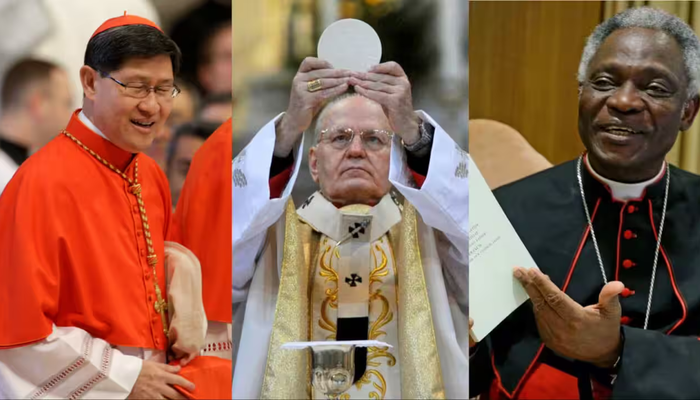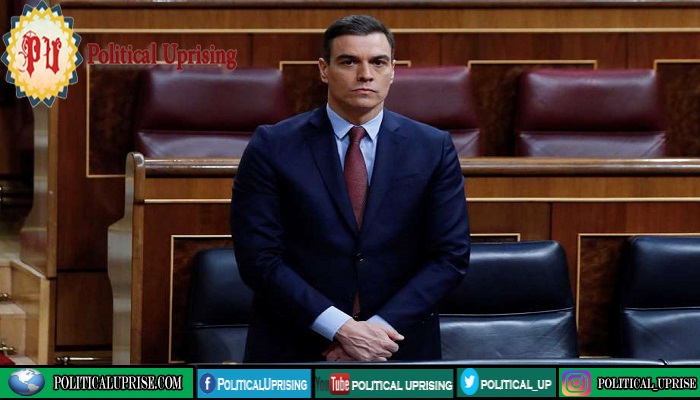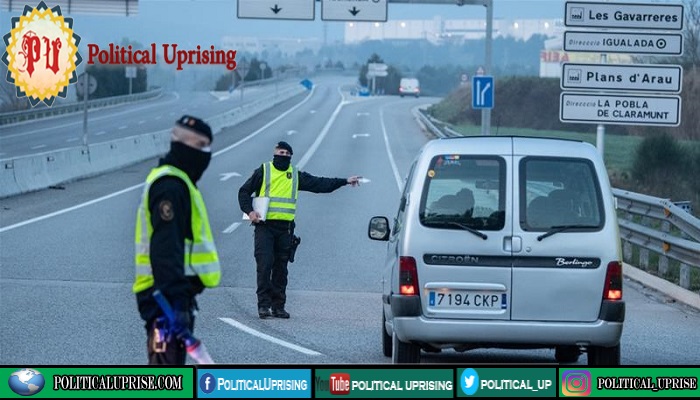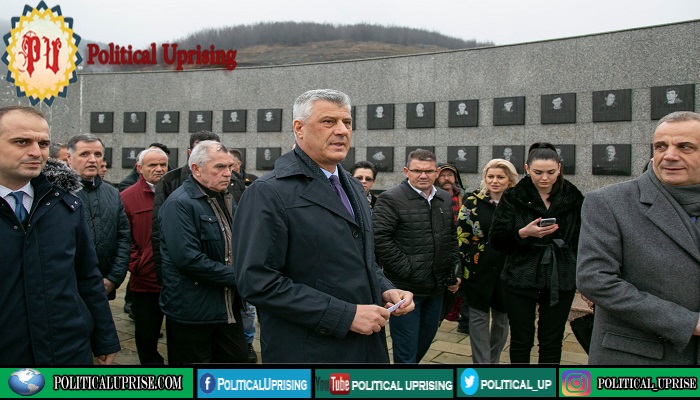As Pope Francis’ tenure nears its end, attention turns to the next leader of the Catholic Church. Key contenders include Ghana’s Peter Turkson, Luis Tagle of the Philippines, and Hungary’s Peter Erdo. Here’s a look at the selection process and who could succeed Francis.
Pope Francis died on Monday morning, the Vatican announced, days after he was discharged from hospital after undergoing treatment for a complex respiratory infection. He was 88 years old.
His death, 12 years after he was declared pope, has prompted renewed questions about who will succeed him as leader of the Catholic Church, one of the oldest and largest religious institutions with up to 1.39 billion followers.
Here’s what you need to know about what could come after Pope Francis, whose social justice ideals and global vision have transformed the Church.
A successor has yet to be chosen.
The College of Cardinals, comprised of senior Catholic clergy – many appointed by Francis himself – will elect the next pope. To be eligible, a candidate must be a baptised, male Roman Catholic, though for centuries, the cardinals have exclusively selected someone from their ranks.
Pope Francis orders cardinals and clerics to take a 10% pay cut
There are currently more than 240 cardinals worldwide. They typically hold the title for life.
Cardinals below the age of 80, when the pope dies or resigns, vote in what is known as the papal conclave. To prevent outside influence, the conclave locks itself in the Sistine Chapel and deliberates on potential successors.
While the number of papal electors is typically capped at 120, there are currently 138 eligible voters. Its members cast their votes via secret ballots, a process overseen by nine randomly selected cardinals. A two-thirds majority is traditionally required to elect the new pope, and voting continues until this threshold is met.
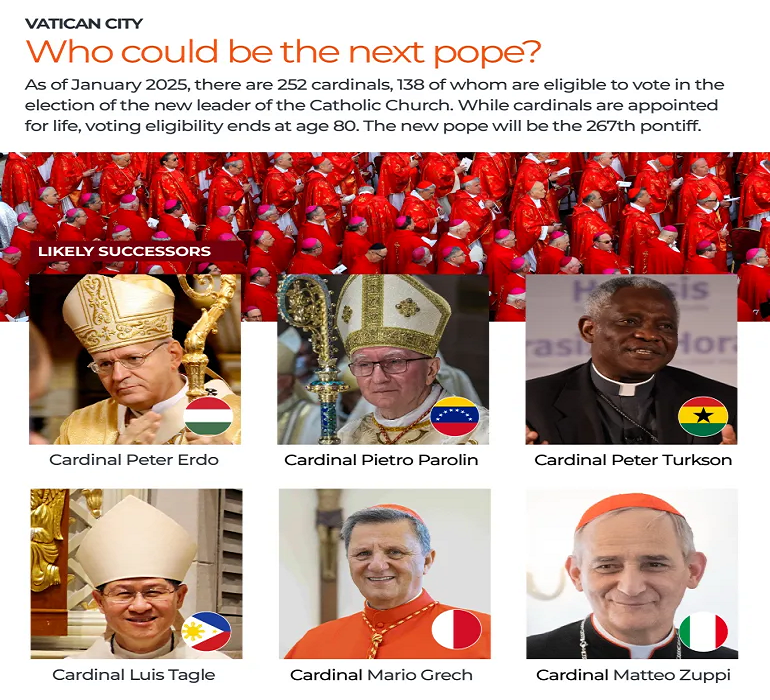
After each round, the ballots are burned with chemicals, producing either black or white smoke, signalling to the world about the outcome. Black smoke signals that no decision has been made, while white smoke means a new pope has been elected. Once the pope is elected, a top cardinal announces his name from Saint Peter’s Basilica.
Pope Francis introduces new tenders law to curb corruption
It usually happens two or three weeks after the death or resignation of the sitting pope. This allows for a nine-day mourning period and for cardinals to make their way to the Vatican from around the world.
The 2013 conclave that elected Pope Francis, the first pontiff from South America, began just 12 days after the resignation of his predecessor, Benedict XVI.
The process can take days, weeks or even longer, depending on how divided the cardinals are.
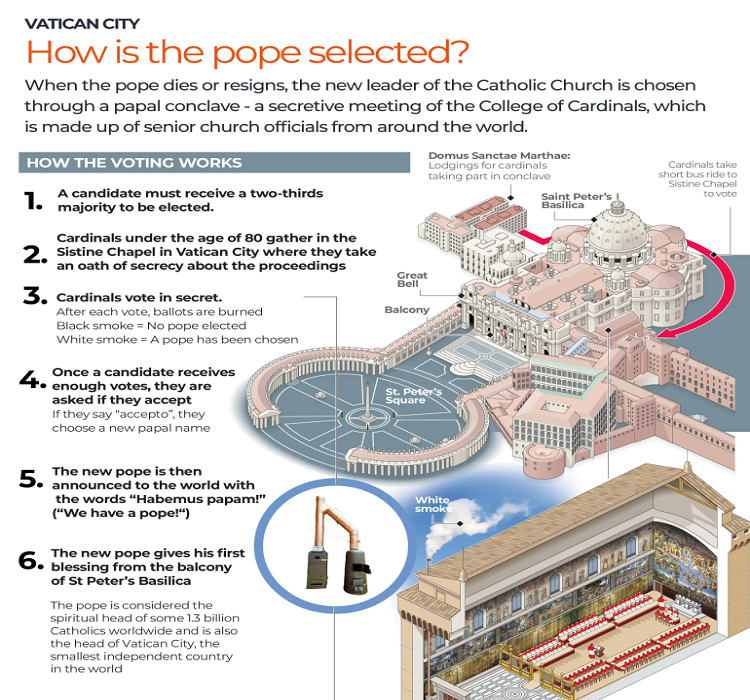
Each day, the conclave can hold up to four rounds of voting to try to achieve the required two-thirds majority. If, after 33 rounds, there is still no decision, the top two candidates face off in a run-off vote.
The elections of the last three popes have been relatively quick, with each lasting only several days.
But historically, elections have sometimes dragged on much longer, with the papal conclave that elected Pope Gregory X in 1271 taking nearly three years due to fierce political wrangling.
Of the 138 cardinals eligible to vote in the conclave, a total of 110 were appointed by Pope Francis. This group is notably more diverse than previous electors, with a higher representation from Asia, Africa and Latin America, reflecting Francis’s goal of mirroring the Church’s global reach. The youngest cardinal elector is only 45 years old, a Ukrainian clergyman based in Australia.
Pope Francis avoids question of married priests in Amazon document
As a result, there is a possibility that, for the first time in centuries, the next pope could come from Africa or Asia, or another region traditionally underrepresented in the Church’s leadership.
Among the African cardinals being discussed are Ghana’s Peter Turkson, the former head of the Pontifical Council for Justice and Peace, and the Democratic Republic of the Congo’s Fridolin Ambongo, archbishop of Kinshasa. Both are committed conservatives who have been vocal advocates for peace in their respective countries.
Another strong contender is Philippine Cardinal Luis Tagle, the former archbishop of Manila. Like Pope Francis, Tagle emphasises social justice and caring for the poor.
Hungarian Cardinal Peter Erdo is seen as a leading conservative candidate and could serve as a bridge to Eastern Christians. The archbishop of Esztergom-Budapest, Erdo, is a traditionalist who has championed outreach to Orthodox Christians, stressing the “desperate need” for unity between the churches.
Also in the mix is Cardinal Pietro Parolin, the Holy See’s secretary of state, whose top diplomatic role ensures he is well known by all cardinals.
Other possible candidates include Italy’s Matteo Zuppi, archbishop of Bologna, and Malta’s Mario Grech, secretary-general of the Synod of Bishops, a position that kept him in close contact with Pope Francis.
During the “sede vacante” (vacant seat) period – when the papal office is unoccupied – a senior cardinal, known as the camerlengo, certifies the pope’s death and temporarily takes charge of the Vatican’s finances and administrative affairs. He does not have the authority to alter Church doctrine or make significant decisions.
The current camerlengo is Irish-born Cardinal Kevin Farrell, who also serves as the president of the Vatican’s Supreme Court.
